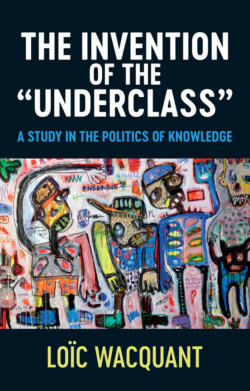Читать книгу The Invention of the 'Underclass' - Loic Wacquant - Страница 8
Prologue
ОглавлениеThe sociologist may find a special instrument of epistemological vigilance in the sociology of knowledge, as the means of enhancing and clarifying the knowledge of error and of the conditions that make error possible and sometimes inevitable.
Pierre Bourdieu et al., Le Métier de sociologue (1968)
The Invention of the “Underclass” is an ethnographically grounded case study in the sociology and politics of knowledge. It draws on the conceptual history of Reinhart Koselleck and on the theory of symbolic power and fields of cultural production of Pierre Bourdieu to chart the stunning rise, multi-sited flourishing, and sudden demise of the urban “folk devil” of the closing decades of the twentieth century known as the underclass.1
Fusing the trope of disorganization with the drive to exoticism, cycling in and out of the social sciences, journalism, and the political-policy-philanthropic field, this woolly and inchoate notion dominated the academic and public debate on race and poverty in the American metropolis roughly from 1977 to 1997. Its advocates, conservatives and liberals alike, claimed that the novel term was needed to capture an unprecedented development: the insidious incubation and cancerous growth of a subpopulation of the black poor, distinct from the traditional lower class, characterized by self-destructive behaviors, social isolation, and cultural deviancy, and responsible for the ravaging of the inner city. During this same period, the category and its demonic imagery were exported to the United Kingdom and continental Europe to agitate the international study of exclusion in the postindustrial metropolis.
